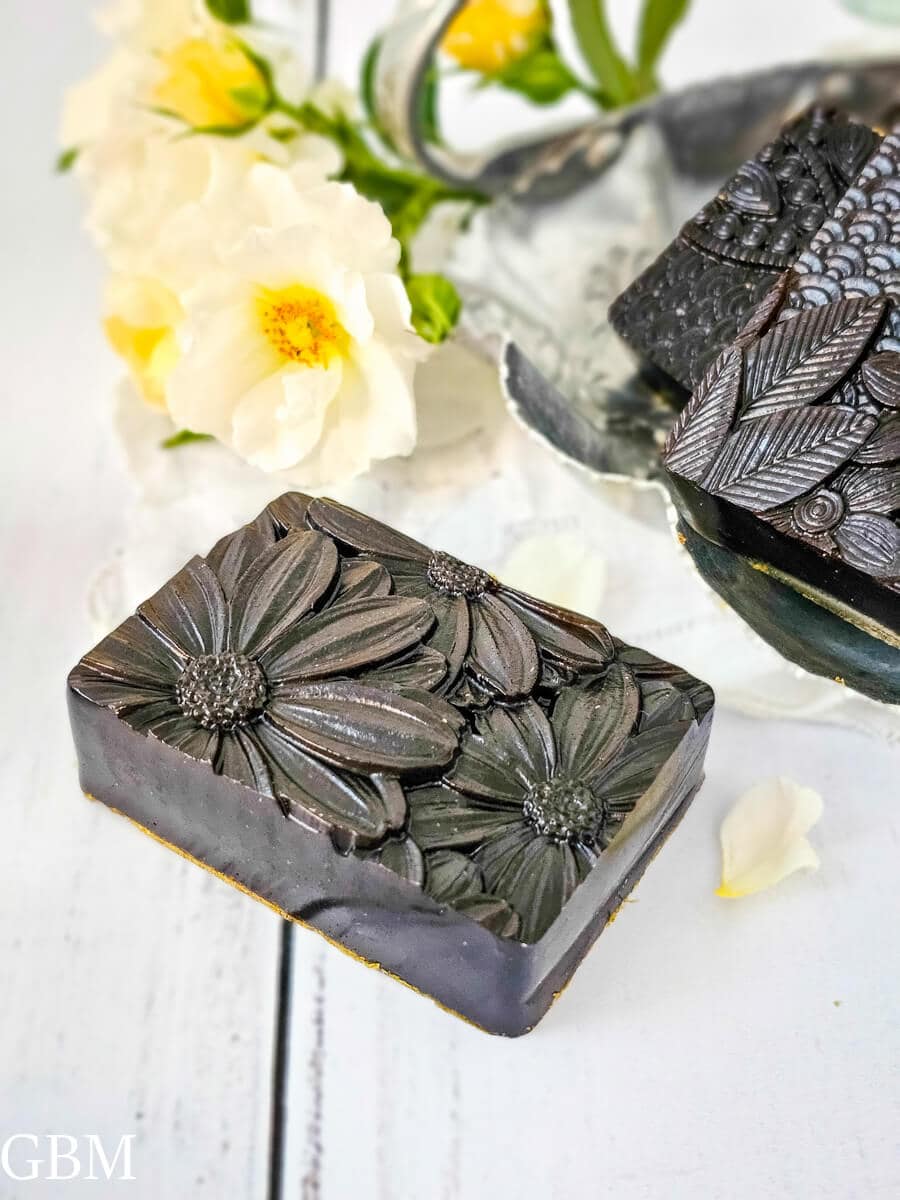The Easiest Melt and Pour Jewelweed Soap Recipe: A Natural Poison Ivy Treatment
Learn how to make this incredibly easy and effective melt and pour Jewelweed soap to help prevent poison ivy rashes.

Poison ivy rashes can turn a peaceful day in nature into a nightmare. But with this easy jewelweed soap recipe, you have a natural and effective way to protect your skin from poison ivy’s urushiol oil.
In this post, I’ll show you the easiest way to make a powerful jewelweed melt-and-pour soap that can help you stay rash-free, even during peak hiking season.
Jewelweed. One of the most effective treatments for the prevention of poison ivy rashes!
Jewelweed (Impatiens capensis) has been foraged and used for generations as a natural remedy for skin irritations, especially poison ivy. It contains saponins, which help break down urushiol oil, and flavonoids that soothe inflamed skin. Native Americans were among the first to discover its effectiveness, and modern research supports its role in preventing poison ivy rashes.

If it sounds too good to be true that there’s an easy homemade soap you can make to help you from ever dealing with poison ivy again…well, you’re just plain wrong! But I get it. I was skeptical when I first learned about the benefits of jewelweed too.
After learning about jewelweed’s benefits, I decided to put it to the test—using small, controlled exposures to poison ivy under safe conditions. What I found was impressive: as long as I applied the jewelweed quickly, I didn’t develop a rash. This confirmed its effectiveness, especially when used as a preventative wash.
This easy natural poison ivy soap recipe not only prevents rashes but also offers soothing skin benefits thanks to its combination of jewelweed and aloe.
Here’s what you’ll need to make this melt and pour jewelweed soap:

- Fresh jewelweed leaves and chopped stems, about 1 cup packed
- 1 pound of melt and pour aloe soap base
- Peppermint essential oil
- A blender or food processor
- A small pan with a pour spout
- A silicone soap mold
- isopropyl alcohol spray
- A fine mesh strainer
How to Make Jewelweed Melt and Pour Soap
Step 1. Remove the leaves and flowers from the jewelweed. Chop the stem into small pieces and pack into a 1 cup measuring cup. You’ll need 1 cup of loosely packed jewelweed plant matter.

Step 2. Wash the jewelweed in cool water to remove any dirt or surface debris. Drain off the excess water. Then add the jewelweed to your blender or food processor along with ¼ cup of water.

Step 3. Process until the plant matter is completely macerated and you have a thick green jewelweed slurry.

Step 4. Cut the melt and pour soap base into small pieces. Add the soap cubes and the jewelweed slurry to your saucepan.

Step 5. Heat the soap and jewelweed slurry on low until the soap cubes have completely melted. Keep the melted soap on low heat and steep for 15 minutes to absorb the benefits of the jewelweed before straining.
Step 6. Pour the melted soap base through a fine mesh strainer to remove the plant matter. Add 15 drops peppermint oil and stir in.

Step 7. Prepare the silicone soap mold by lightly spraying each cavity with the isopropyl alcohol. This will help prevent any bubbles in the bottom of your soaps. Pour the melted soap into the soap molds. Then lightly spray again with the alcohol to prevent surface bubbles as well.

Step 8. Allow the soap to cool and harden completely, then pop out of the molds.

Tips for using and storing your jewelweed soap
For this soap to be effect in preventing poison ivy you must do 3 things.
- Always remember to avoid touching your face and other parts of your body after coming into contact with poison ivy.
- Wash thoroughly with this soap and warm water as soon as possible after you think you’ve come into contact with poison ivy!.
- Put the clothing you wore that day and your bath towel directly into the clothes washer! Often we forget the oils could be on our clothes and then pick them up later, re-exposing our skin to the oil.
- Follow up with another scrub the next day just for good measure!
What if I already have a poison ivy rash? Can this help?
Yes! Washing with jewelweed soap can help to ensure that your rash does not spread. Also, the jewelweed and aloe can help soothe skin irritation that’s already occurring.
Storing your jewelweed soap:
Melt and pour soap needs to be stored in a cool, dry place, like a linen cupboard.
Wrap each bar tightly in plastic cling wrap.
If you live in an area with high humidity, you might find that your soap sweating, or beads of moisture forming on the soap. To help prevent this you can set your soap in an area under a ceiling fan and allow it to cure and harden for a week, then wrap and store.
This soap has a shelf life of about 1-2 years. While the soap doesn’t actually go bad, it can dry out and become brittle over time.
I often give this soap to my outdoorsy friends. Life without poison ivy is a pretty great gift I think. I hope that you’ll give this recipe a try, and share your experience in the comments below! Don’t forget to check out my other DIY skincare recipes for more natural ways to protect and nourish your skin.

The Easiest DIY Jewelweed Soap
Ingredients
- 1 cup loosely packed jewelweed leaves and stems
- 1 pound aloe melt and pour soap base
- 1/4 cup water
- 15 drops peppermint essential oil
Instructions
- Remove the leaves and flowers from the jewelweed. Chop the stem into small pieces and pack into a 1 cup measuring cup. You’ll need 1 cup of loosely packed jewelweed plant matter.
- Wash the jewelweed in cool water to remove any dirt or surface debris. Drain off the excess water. Then add the jewelweed to your blender or food processor along with ¼ cup of water.
- Process until the plant matter is completely macerated and you have a thick green jewelweed slurry.
- Cut the melt and pour soap base into small pieces. Add the soap cubes and the jewelweed slurry to your saucepan.
- Heat the soap and jewelweed slurry on low until the soap cubes have completely melted. Keep the melted soap on low heat and steep for 15 minutes to absorb the benefits of the jewelweed before straining.
- Pour the melted soap base through a fine mesh strainer to remove the plant matter. Add approximately 15 drops peppermint oil and stir to blend.
- Prepare the silicone soap mold by lightly spraying each cavity with the isopropyl alcohol. This will help prevent any bubbles in the bottom of your soaps. Pour the melted soap into the soap molds. Then lightly spray again with the alcohol to prevent surface bubbles as well.
- Allow the soap to cool and harden completely, then pop out of the molds.
Notes
Storing your jewelweed soap:
Melt and pour soap needs to be stored in a cool, dry place, like a linen cupboard. Wrap each bar tightly in plastic cling wrap. If you live in an area with high humidity, you might find that your soap sweating, or beads of moisture forming on the soap. To help prevent this you can set your soap in an area under a ceiling fan and allow it to cure and harden for a week, then wrap and store. This soap has a shelf life of about 1-2 years. While the soap doesn’t actually go bad, it can dry out and become brittle over time.


This recipe sounds really easy to make! I can’t wait to give it a try. Thanks so much for sharing.
I have so much jewel weed in my yard so much I’ve pullEd as weeds and Richard ed. I have a field full of it keep for hummingbirds. I want to make this soap sound easy. Thank you so much now my weeds lol will be Gods itch relief he created all for us to use somedaybwe will be able to eat from his tree of life and never grow old and die but for now ill use his jewelweed for my itch thanks again for sharing